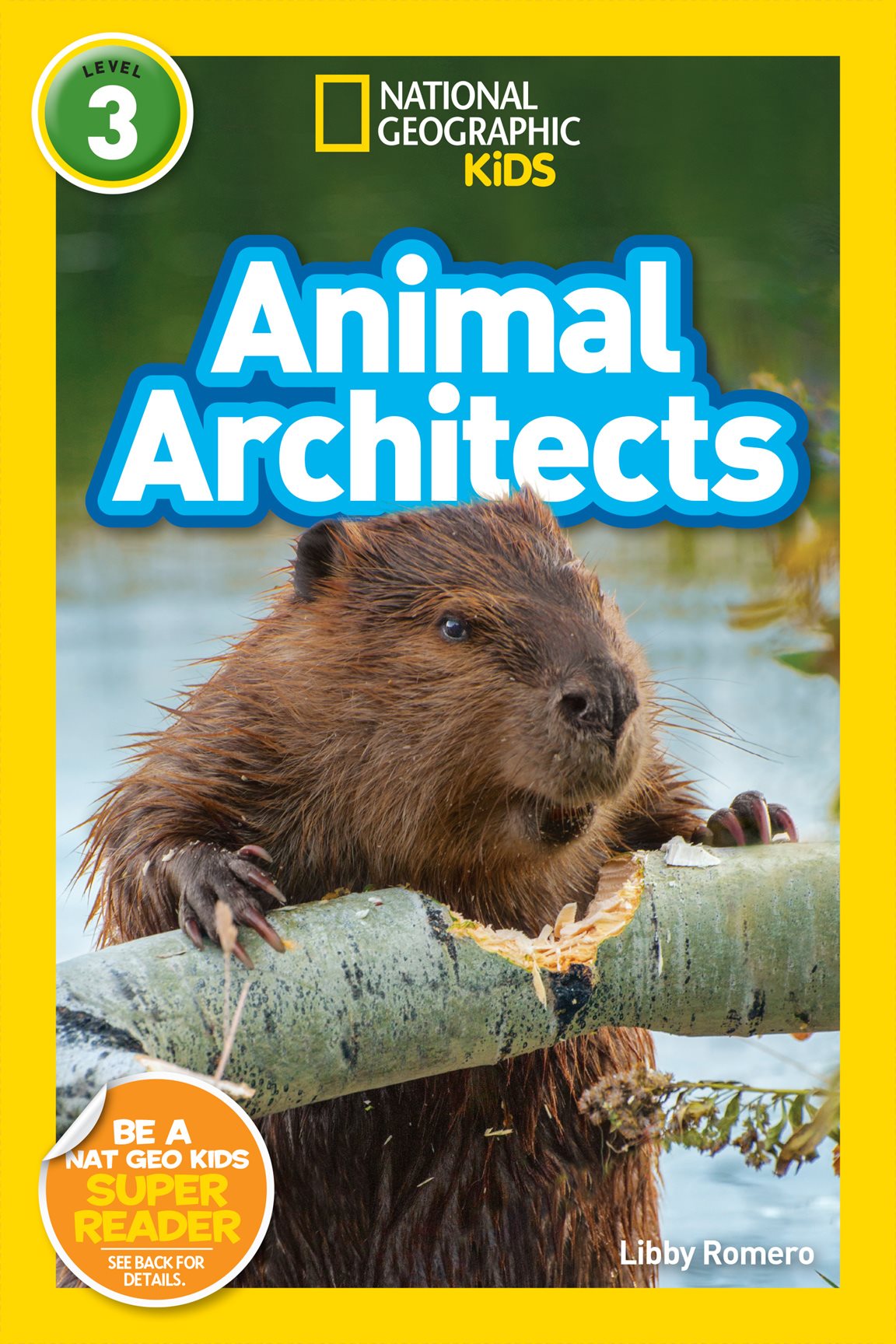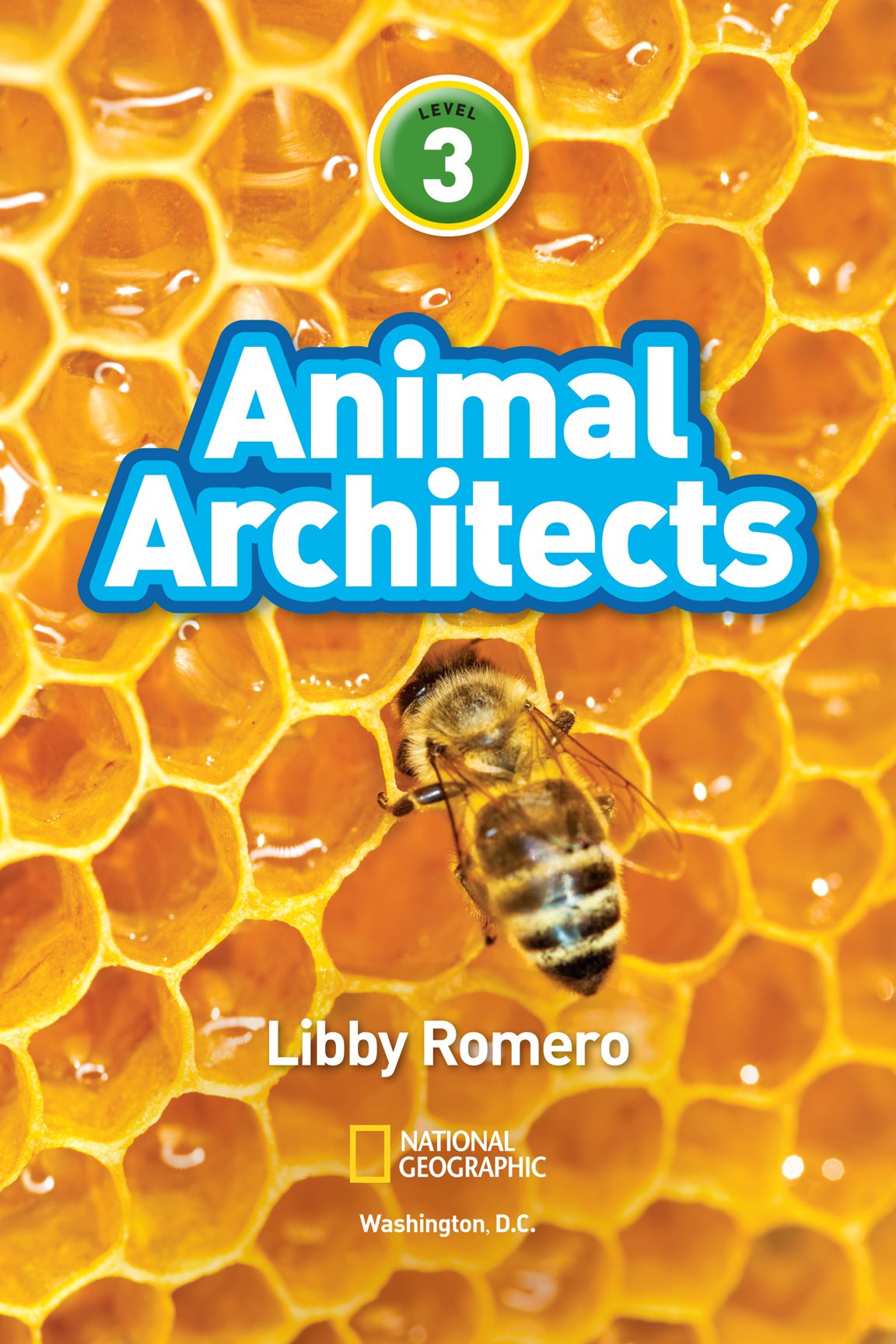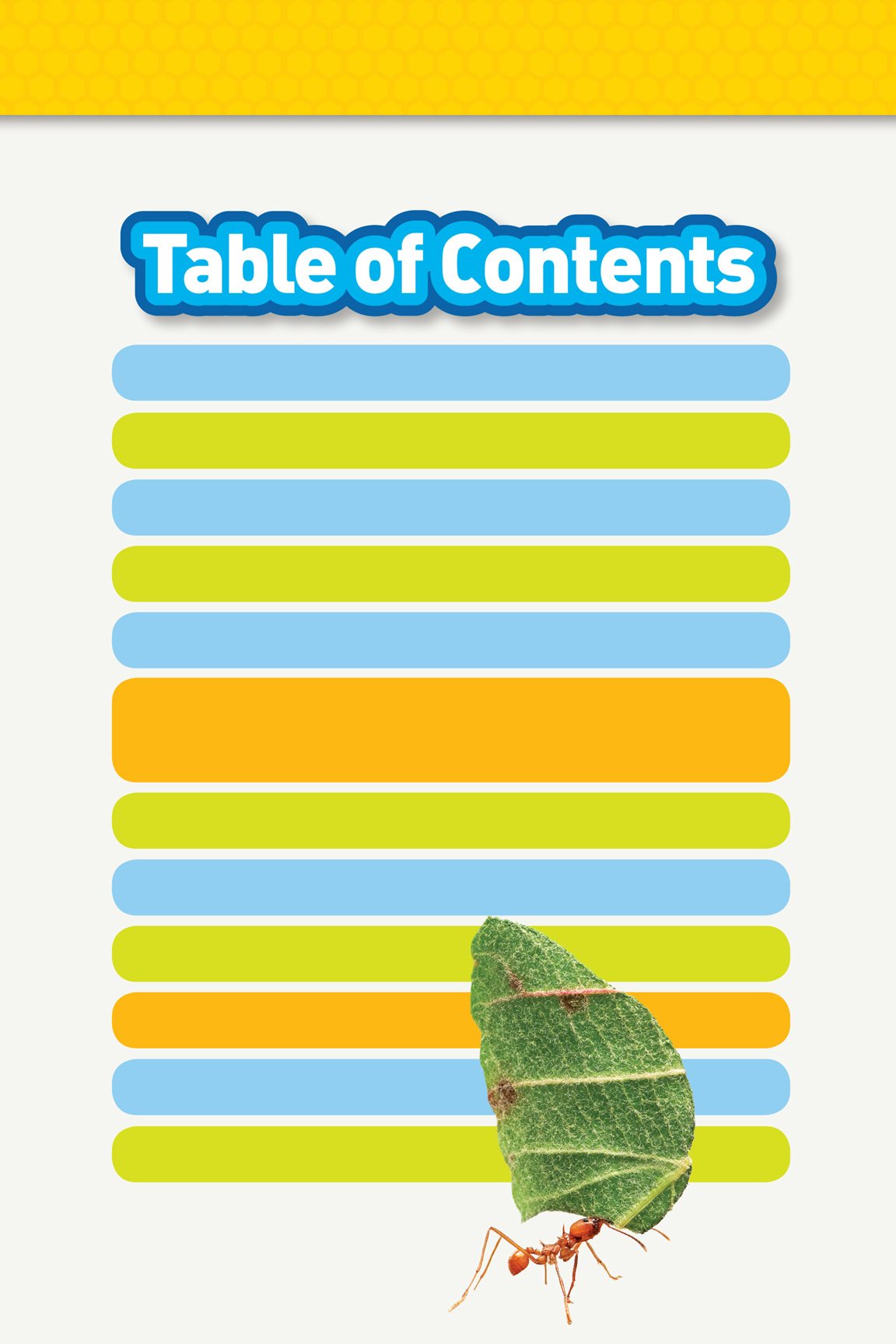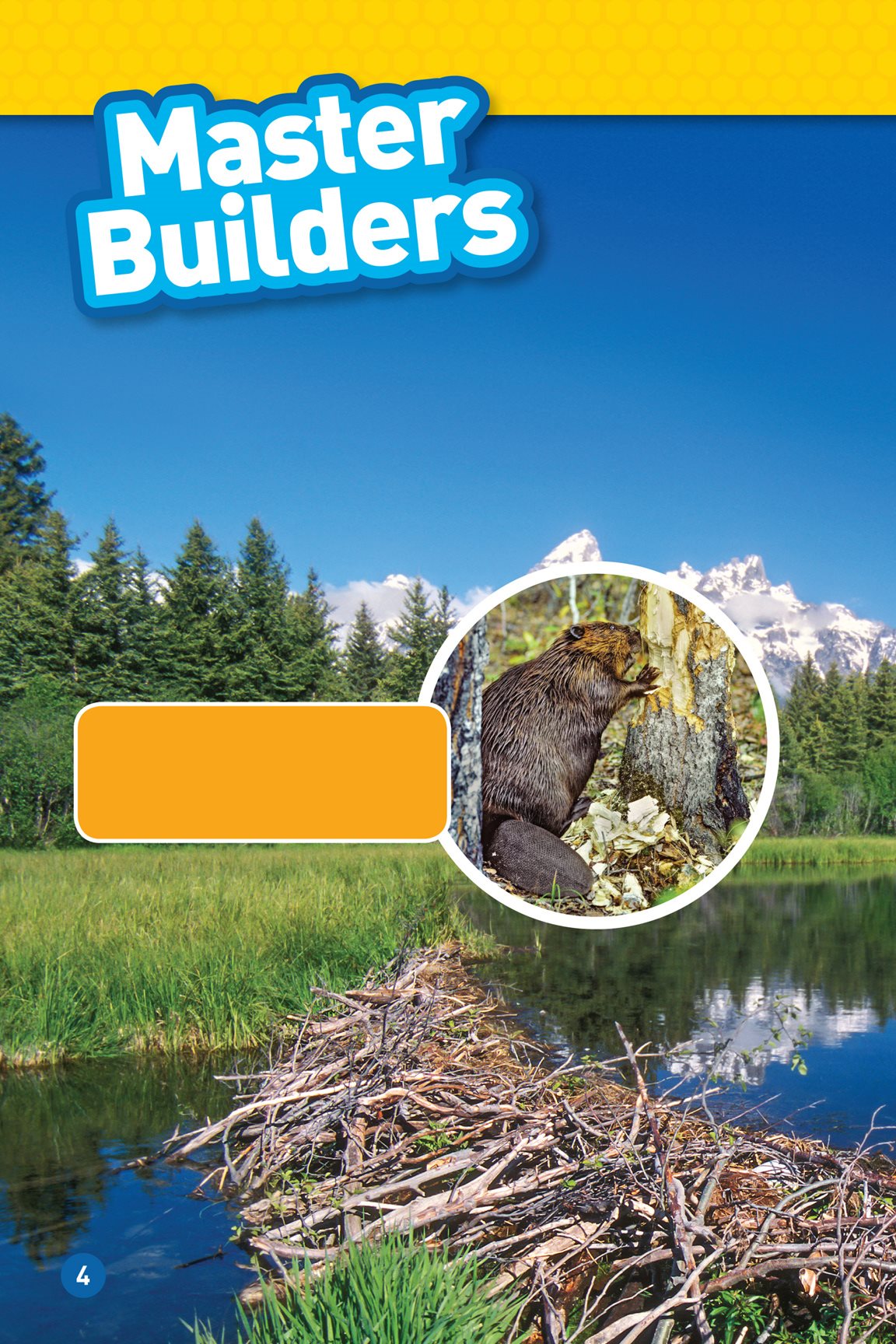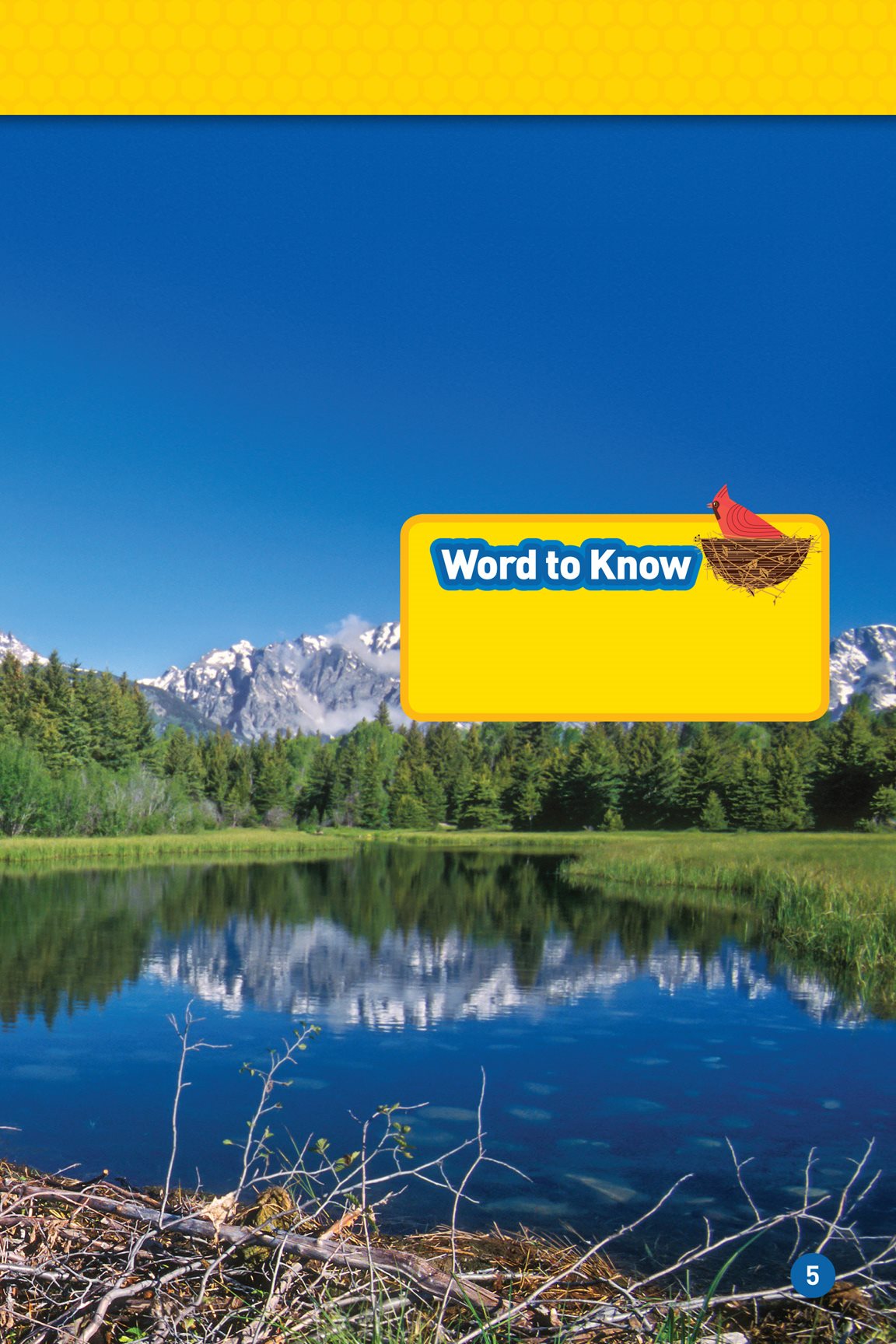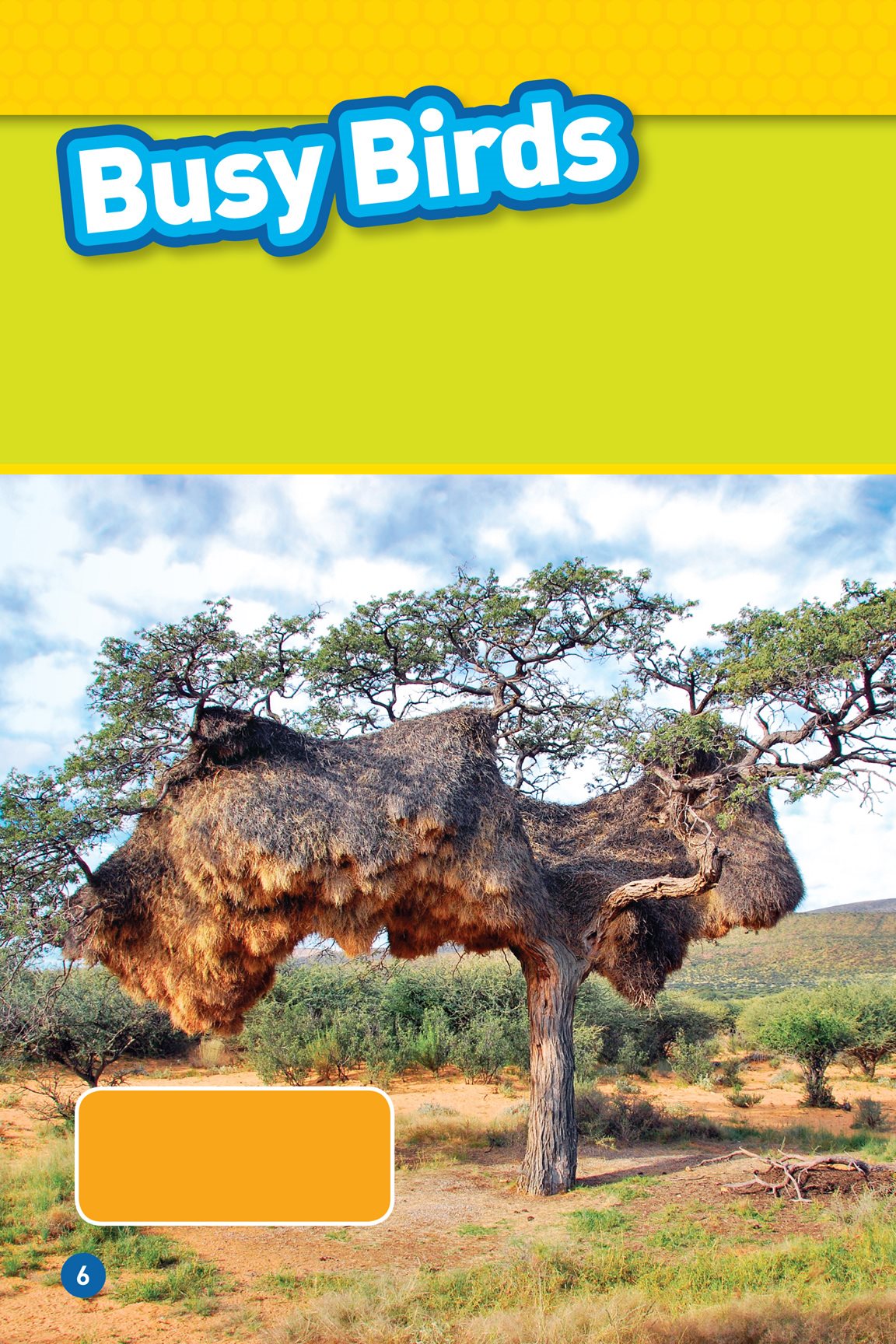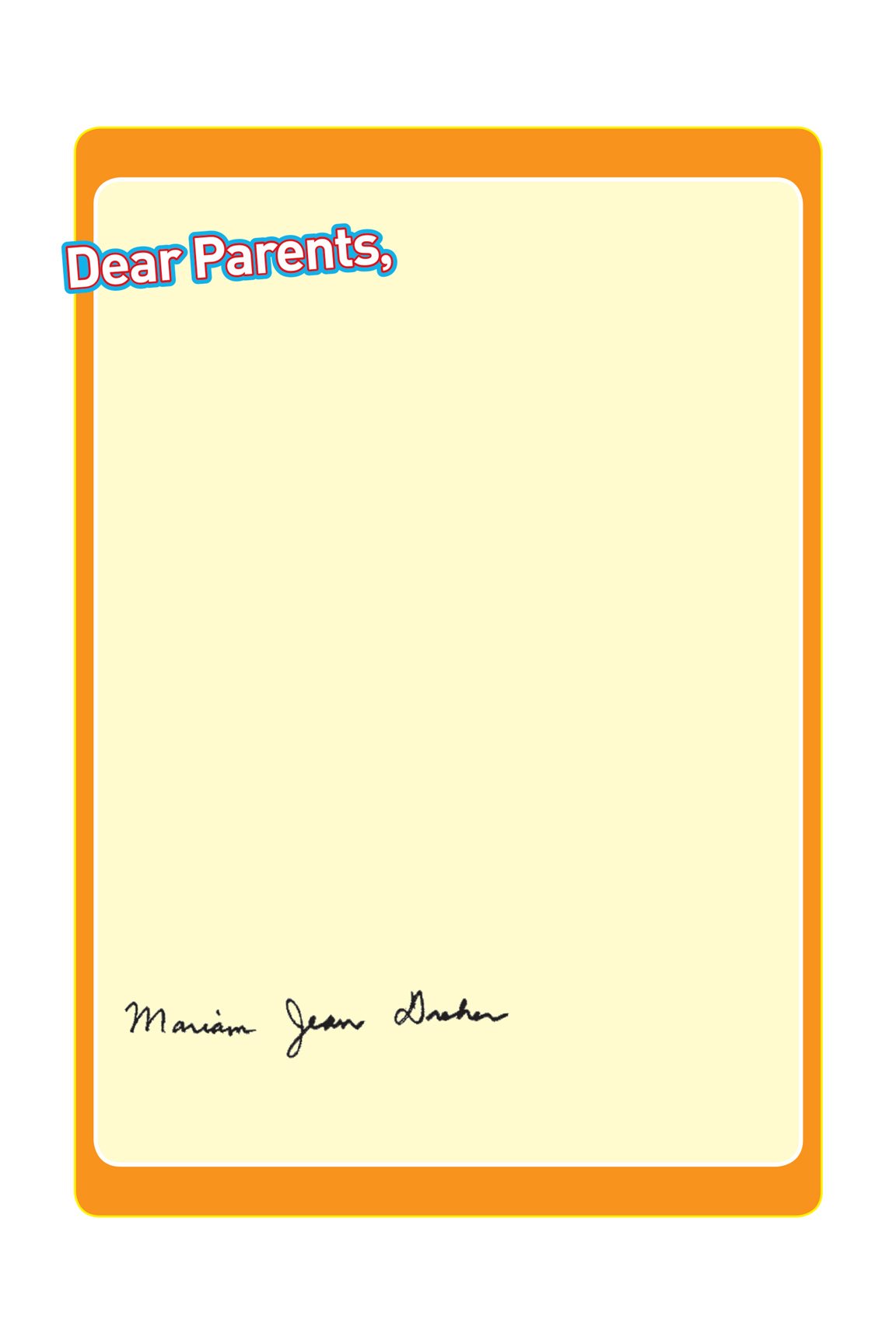
Children are naturally curious about the world around them, and
curiosity is a powerful motivation for reading. Studies show that
informational reading is critical to success in school. National
Geographic Kids Readers allow you to feed your childrens interests
and create readers who not only can read, but also want to read!
To sustain childrens excitement about reading, we have created a
special program called NATIONAL GEOGRAPHIC KIDS SUPER READERS.
As kids read each National Geographic Kids Reader, they cross
off its picture on a free National Geographic Kids Super Readers
poster that parents can download from natgeokids.com/superreaders.
Throughout the process, kids and parents go to the website and
download specially designated prizes that reward their effort. Kids
can have even more reading fun online, with lively book-related
activities, quizzes and games, fascinating excerpts, and sneak
previews of upcoming books.
The National Geographic Kids Super Readers program appeals to
kids love of accomplishment while providing them with incentives
to keep reading. When the reading experience is fun, children learn
more and achieve more. What could be better than that?
Sincerely,
Mariam Jean Dreher
Professor of Reading Education
University of Maryland, College Park

For Katrina L. R.
Copyright 2019 National Geographic Partners, LLC
Published by National Geographic Partners, LLC,
Washington, D.C. 20036.
All rights reserved. Reproduction in whole or in
part without written permission of the publisher is
prohibited.
NATIONAL GEOGRAPHIC and Yellow Border Design are
trademarks of the National Geographic Society, used
under license.
Designed by Yay! Design
Library of Congress Cataloging-in-Publication Data
Names: Romero, Libby, author.
Title: Animal architects / by Libby Romero.
Description: Washington, DC : National Geographic Kids,
[2019] | Series: National geographic readers | Audi
ence: Ages 6-9. | Audience: K to grade 3.
Identifiers: LCCN 2018031443 (print) | LCCN 2018032652
(ebook) | ISBN 9781426333309 (e-book + audio)
| ISBN 9781426333279 (pbk.)
| ISBN 9781426333286 (hardcover)
Subjects: LCSH: AnimalsHabitationsJuvenile
literature.
Classification: LCC QL756 (ebook) | LCC QL756 .R66 2019
(print) | DDC 591.56/4dc23
LC record available at https://lccn.loc.gov/2018031443
The author and publisher gratefully acknowledge the
expert content review of this book by Jason Matthews,
master naturalist and environmental educator, Montana
Natural History Center, and the literacy review of this
book by Mariam Jean Dreher, professor of reading
education, University of Maryland, College Park.
Photo Credits
AL = Alamy; GI = Getty Images; MP = Minden Pictures;
NGC = National Geographic Creative; SS = Shutterstock
Cover, Danita Delimont/GI; header (throughout), super
granhero/SS; vocab (throughout), Lana_Samcorp/
SS; 1, Grafissimo/GI; 3, Eric Issele/GlobalP/GI; 4-5,
Arterra/UIG via GI; 4, Tom & Pat Leeson/ARDEA; 6,
Michael Potter11/SS; 7 (LE), Maresa Pryor/NGC; 7 (RT),
imageBROKER/AL; 8, Panoramic Images/GI; 9, Thilanka
Perera/GI; 10, Konrad Wothe/MP; 11, Tim Laman/NGC;
12, Christopher Murray/EyeEm/GI; 13, Don Bartletti/
Los Angeles Times via GI; 14, Federico.Crovetto/SS; 15,
Perennou Nuridsany/Science Source; 16, Dr. Gonzalo
Giribet/NGC; 17 (UP), Genevieve Vallee/AL; 17 (LO), Pong
Wira/SS; 18, thatreec/GI; 19, Mark W. Moffett/NGC; 20,
Jason Edwards/NGC; 21, DeAgostini/GI; 22, muendo/
GI; 23 (LE), Juergen Freund/AL; 23 (RT), Pan Xunbin/
SS; 24, Albert Krebs/Entomologie/Botanik, ETH Zrich;
25, Dr. Jerome G. Rozen; 26, Maslov Dmitry/SS; 27,
StudioSmart/SS; 28, Alfred Trunk/McPhoto/ullstein bild
via GI; 29, Carson Baldwin Jr./Animals Animals; 30 (1),
Jason Edwards/NGC; 30 (2), John Porter LRPS/AL; 30
(3), DigitalGlobe via Getty; 31 (4), Tim Laman/NGC; 31 (5),
Konrad Wothe/MP; 31 (6), Michael Poliza/NGC; 32 (UP),
Ingo Arndt/MP; 32 (CTR LE), Roman Bodnarchuk/SS; 32
(CTR RT), Elif Bea/SS; 32 (LO), mahmood alishahi/SS;
33, George Grall/NGC; 34 (UP), Darlyne A. Murawski/
NGC; 34 (LO), Al Petteway & Amy White/NGC; 35, George
Grall/NGC; 36-37, Andrew Watson/GI; 36, Tim Laman/
NGC; 37, Ryan Rossotto/NGC; 38 (UP), Paulo Oliveira/
AL; 38 (LO), Yoji Okata/MP; 39, David Doubilet/NGC;
40-41, Romeo Gacad/AFP/GI; 40, Hugo Van Lawick/NGC;
42-43, Nicky Bay Photography; 43, Ingo Arndt/Nature
Picture Library; 44 (1), Kris Wiktor/SS; 44 (2), Chris
Mole/SS; 44 (3), Mark W. Moffett/NGC; 45 (4), Ashley
Whitworth/AL; 45 (5), brandtbolding/GI; 45 (6), Enrique
Lopez-Tapia/Nature Picture Library; 45 (7), Claude
Nuridsany & Marie Perennou/Science Source; 46 (UP),
StockLite/SS; 46 (CTR LE), Ivan Smuk/SS; 46 (CTR RT),
Andrew Watson/GI; 46 (LO LE), Apisit Wilaijit/SS; 46 (LO
RT), Sergey Lavrentev/SS; 47 (UP LE), Claude Nuridsany
& Marie Perennou/Science Source; 47 (UP RT), Oqbas/
SS; 47 (CTR LE), Rosa Baik/EyeEm/GI; 47 (CTR RT),
Genevieve Vallee/AL; 47 (LO LE), Yegor Larin/SS
National Geographic supports K12 educators with ELA Common Core Resources.
Visit natgeoed.org/commoncore for more information.


